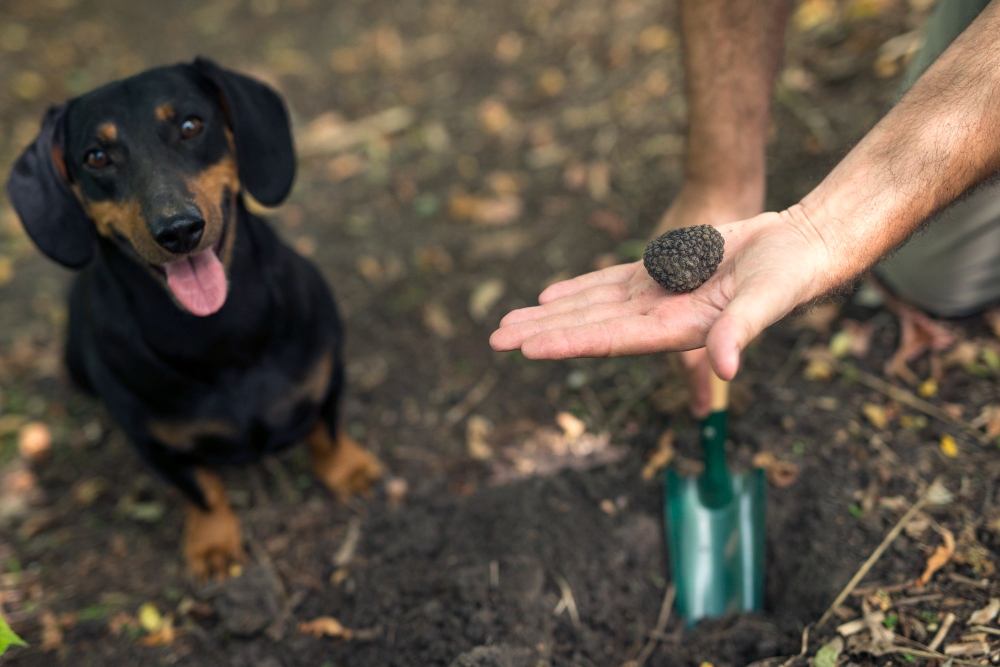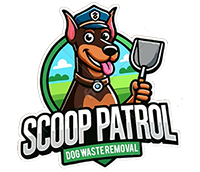The Ultimate Guide to Dog Waste Management for a Healthy Lawn
A comprehensive guide for dog owners to maintain a lush, green lawn while responsibly managing pet waste.

Owning a dog brings so much joy. Their companionship, playful energy, and unconditional love are invaluable. However, with this joy comes responsibility, and one of the less glamorous aspects of dog ownership is dealing with their waste. While it might seem like a minor inconvenience, the truth is that improper dog waste management can have a significant and detrimental impact on the health and appearance of your lawn and dog health.
- Have you noticed those unsightly brown spots marring your green carpet?
- Are there areas where the grass simply refuses to grow, no matter how much you water and fertilize?
- Does your yard sometimes carry an unpleasant odour that lingers long after your dog’s visit?
If you’ve answered yes to any of these questions, your dog waste could be the culprit.
This comprehensive guide will delve into the intricacies of dog waste management, providing you with the knowledge and tools to maintain a healthy, vibrant lawn while being a responsible pet owner.
We’ll explore the science behind how dog waste affects your grass, discuss the potential health and hygiene concerns, examine various waste management methods, and ultimately, present effective solutions to help you achieve the beautiful outdoor space you deserve.
The Science Behind Dog Waste and Its Impact on Your Lawn
Dog waste isn’t just a visual nuisance; it’s a complex substance with a chemical makeup that can wreak havoc on your lawn’s delicate ecosystem. Understanding the science behind its effects is the first step toward implementing effective management strategies.
The Chemical Composition of Dog Waste:
Dog waste is significantly different from the manure of herbivores like cows or horses. Herbivore manure is often used as a fertilizer because it’s rich in nutrients that plants need. In contrast, dog waste is high in nitrogen and has a pH level that’s more alkaline. This difference is primarily due to the carnivorous diet of dogs, which results in waste products with a higher concentration of urea and other nitrogenous compounds.
When dog waste decomposes on your lawn, it releases these nitrogen compounds in a concentrated form. While nitrogen is essential for plant growth, excessive amounts can “burn” the grass, leading to discolouration and even death. This is similar to over-fertilizing your lawn, which can also have damaging effects.
The pH Imbalance:
The alkaline nature of dog waste can disrupt the natural pH balance of your soil. Healthy soil has a slightly acidic to neutral pH, which allows grass roots to absorb nutrients efficiently. When the soil becomes too alkaline, it can hinder nutrient absorption, weakening the grass and making it more susceptible to diseases and pests.
The Nitrogen Burn Effect:
The high concentration of nitrogen in dog waste, particularly urea, causes the characteristic “nitrogen burn.” This occurs when the nitrogen “burns” the grass blades, leading to brown or yellow spots. These spots are often surrounded by a ring of dark green, where the nitrogen has acted as a fertilizer in a less concentrated area.
The Spread of Pathogens:
Dog waste can contain various pathogens, including bacteria (like E. coli and Salmonella), parasites (like roundworms and hookworms), and viruses. When left on the lawn, these pathogens can contaminate the soil and pose health risks to humans and other pets. Rain can further spread these contaminants, potentially affecting a larger area.
The Physical Barrier:
Even without the chemical effects, a significant amount of dog waste can act as a physical barrier, preventing sunlight and air from reaching the grass. This can weaken the grass and hinder its growth.
The Long-Term Consequences:
Repeated exposure to dog waste without proper management can lead to long-term soil degradation, making it difficult for healthy grass to thrive. In severe cases, it may be necessary to replace the topsoil to restore the lawn’s health.

How to Maintain a Healthy Lawn with Dogs
While professional waste removal services like Scoop Patrol can significantly improve your lawn’s health, there are other steps you can take to ensure a lush, green, and dog-friendly outdoor space.
Regular Watering:
- Proper watering is crucial for a healthy lawn, especially when you have dogs.
- Water deeply and less frequently to encourage strong root growth.
- Water early in the morning or late in the evening to minimize evaporation.
Aeration:
- Aeration involves creating small holes in the soil to improve air circulation, water drainage, and nutrient absorption.
- This is especially beneficial for compacted soil, which is common in areas where dogs run and play.
Fertilizing:
- Use a dog-friendly fertilizer that is safe for pets to walk on after application.
- Choose a fertilizer that is appropriate for your grass type.
- Follow the fertilizer manufacturer’s instructions carefully.
Overseeding:
- Overseeding involves planting new grass seed over existing grass to thicken the lawn and fill in bare spots.
- This can help to repair damage caused by dog waste and heavy traffic.
Choosing Dog-Friendly Grass:
- Some grass types are more tolerant of dog urine and traffic than others.
- Consider options like perennial ryegrass, fescue, and Kentucky bluegrass.
Creating Designated Potty Areas:
- Train your dog to use a specific area of the yard for urination and defecation.
- This can help to contain the damage to one area and make cleanup easier.
- Use materials like gravel or mulch in the designated area.
Rinsing Urine Spots:
- Immediately rinsing urine spots with water can help to dilute the nitrogen and minimize damage.
Using Lawn Repair Products:
- There are lawn repair products specifically designed to treat brown spots caused by dog urine.
- These products can help to neutralize the urine and promote grass growth.
Maintaining a healthy and beautiful lawn while owning a dog may seem challenging, but it’s entirely achievable. By understanding the impact of dog waste, implementing proper management strategies, and taking proactive steps to care for your lawn, you can create an outdoor space that both you and your furry friend can enjoy.
Don’t let dog waste control your outdoor enjoyment. Take action today to reclaim your yard and create a space where memories are made, not messes.
Ready to say goodbye to dog poop stress and hello to a pristine lawn? Get a FREE, no-obligation quote from Scoop Patrol today and experience the difference! Visit our website or call us to schedule your first cleanup. Your dream yard awaits!

